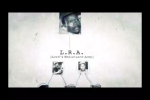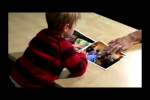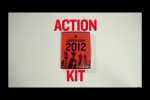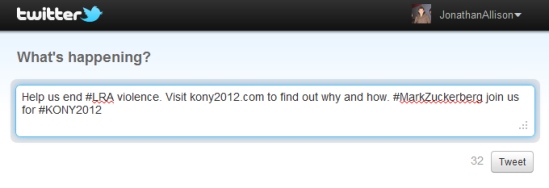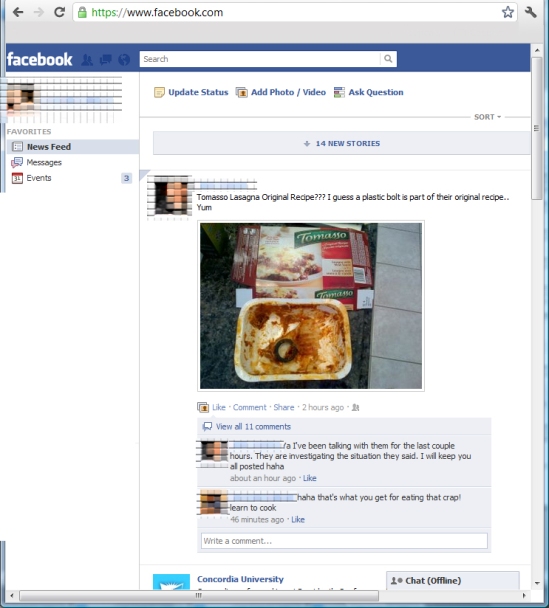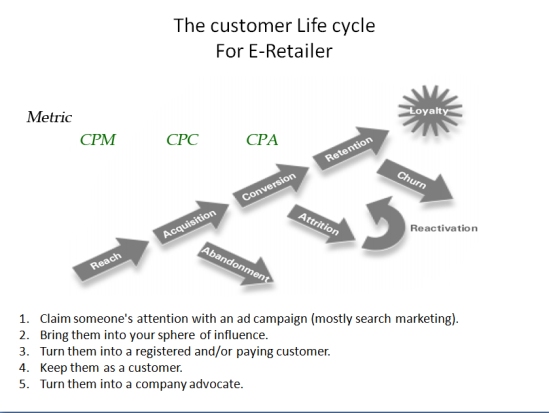
The customer life cycle for an Ecommerce Operation
An effective integrated marketing communications campaign communicates the desired message with a single, unified, clear and compelling voice with the chosen marketing communication tools (Advertising, Sales Promotion, Public Relations, Direct Marketing, Personal Selling).
One of the benefits of online advertising is the ability to measure and track the behavior of those exposed to the message. With the appropriate metrics one can track the effectiveness of the campaign, analyze the online customer life cycle, and identify opportunities to make improvements.
Once an online ad campaign has been established (see Google AdWords or Microsoft AdCenter) the advertiser can begin to track the behavior of potential customers as they relate to the customer life cycle.
The diagram above shows that reach is the number of exposures (impressions) your ad has. This is often measured in cost per thousand, or cost per mille (CPM). Once a potential customer has been exposed to your message they can proceed to the acquisition stage, taking action and clicking on your ad. Acquisition is measured in cost per click (CPC).
Moving from an exposure (impression) to acquisition is somewhat of an art, perfected over time through trial and error. A good call to action helps! A strong call to Action might include;
- See More!
- Join Now!
- Free Shipping!
An advertiser should make a conscious effort to avoid unsavory terms with negative connotations like Cheap!
A successful AdWords campaign will find niche long tail keywords ( “Jewelry” vs. “Silver Journey Pendant”) which are often less popular and more affordable, often combined with deep seeding to customized highly targeted landing pages to get customers to the content they’re searching for in the fewest clicks possible.
Note: If you have a high bounce rate it means you’re doing something wrong (it’s called abandonment) because your would be customers are leaving you as soon as they land on your website. This is costing you money so you should fix it! Try better targeting or fix your landing pages.
Moving on we have conversion, if you got to this point it means you’ve done something right at least once, so congratulations! You’ve elicited the desired behavior, whether it be downloading a White Paper, creating an account, or making a purchase. This is measured in cost per acquisition (CPA).
If all goes according to plan you should work towards increasing the retention of your customers as it’s more cost-effective to maintain a customer than to pay to acquire new ones. If you fail, which you might, you’ll need to step up your marketing efforts to reactivate them. (consider promotions, newsletters, etc.). Ultimately you are working towards is maximizing the number of loyal customers you have while reducing the churn (defecting customers).




